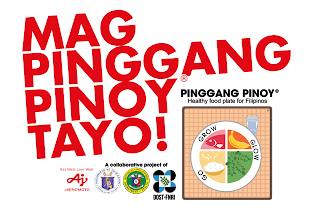To address this problem, our government launched the Pinggang Pinoy® campaign in 2014. Pinggang Pinoy® is an easy-to-understand food guide showing proper food group portioning on a per-meal basis. This reflects the principles of MOderation, VAriety and BAlance (MOVABA) to promote healthier eating habits.
Solving the Philippines’ Double Burden of Malnutrition should be a collaborative effort between the public and private sectors as it is not an easy feat. With this, Ajinomoto Philippines Corporation partnered with government agencies to conduct education programs to raise awareness and promote the practice of Pinggang Pinoy® in malnutrition hotspots, where incidences of Double Burden Malnutrition are high. This training was given to homemakers/mothers who have malnourished (underweight, stunting, wasting, overweight and obese) school-aged children.
The pilot run resulted to improvements of the knowledge & attitudes of households related to the practice of Pinggang Pinoy® within target areas. However, behavior changes towards healthier eating habits remains to be a challenge. The program uncovered a number #MalnutritionTraps that some Pinoy households easily fall into. The following #MalnutritionTraps provide a picture of how unhealthy eating habits may lead to Double Burden of Malnutrition:
The pilot run resulted to improvements of the knowledge & attitudes of households related to the practice of Pinggang Pinoy® within target areas. However, behavior changes towards healthier eating habits remains to be a challenge. The program uncovered a number #MalnutritionTraps that some Pinoy households easily fall into. The following #MalnutritionTraps provide a picture of how unhealthy eating habits may lead to Double Burden of Malnutrition:
1. Overconsumption of carbohydrates: Voracious rice eaters can easily fill half of their plates with rice. Others have pandesal & noodles as regular meal deprived of other nutrients derived from a well-balanced meal.
2. Under consumption of vegetables and/fruits: It is common for some to be content with rice & meat to satisfy their hunger and skip/take insufficient amount of vegetables/fruits. Fact is, the variety of colors found in Glow foods are important sources of vitamins & minerals to sustain our energy & keep us from getting sick.
3. Overconsumption of protein: Typical Filipino “SILOG” meals include double serving of proteins (e.g. Tapa+Itlog, Tocino+Itlog, Longanisa+Itlog, Bangus+Itlog). Eating different kinds of protein is fine for as long as they are taken in moderation. We must also avoid protein dishes served high in fat, cholesterol and sodium.
More stories about #MalnutritionTraps can be referenced from these documentary videos:

“Puro Carbs”
|
“Breakfast Skipper”
|
“Kulang sa Protina”
|
“Pamilya Unlirice
|
To help Filipinos break free from #MalnutritionTraps, Ajinomoto’s Culinary Nutrition Team prepared Healthy & Delicious Pinggang Pinoy® Recipes, downloadable through https://bit.ly/2HIsfkj. Busy and budget-restricted homemakers will also find these Pinggang Pinoy® recipes useful because all are easy-to-do and affordable (P250/day for family of 5).
For updates about Mag-Pinggang Pinoy® Tayo!, visit www.ajinomoto.com.ph and facebook.com/CookmunitybyAjinomotoPH.
---
The Ajinomoto Group is a global leader in amino acids thanks to its advanced bioscience and fine chemical technologies. Its products cover a range of fields such as seasonings, processed foods, beverages, amino acids, pharmaceuticals, and chemicals.
Since discovering "umami" (the fifth basic taste, created by glutamic acid, a type of amino acid) in 1908, we have been scientifically pursuing the possibilities of amino acids, and supporting the healthy lives of people all around the world. Based on our corporate message “Eat Well, Live Well” we aim for further growth and continuous contribution to greater wellness for people by creating value with communities and society.
The Ajinomoto Group has offices in 35 countries and regions, and sells products in more than 130 countries and regions. Its sales were 1.1502 trillion yen (10.3 billion U.S. dollars) in fiscal year 2017. To learn more, visit https://www.ajinomoto.com/.


No comments:
Post a Comment